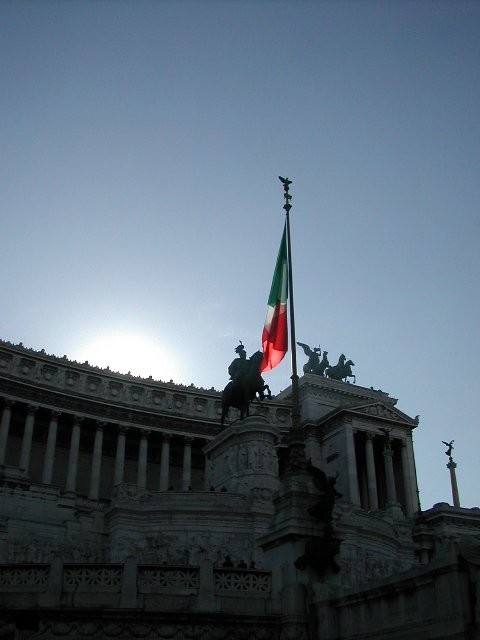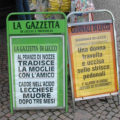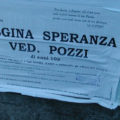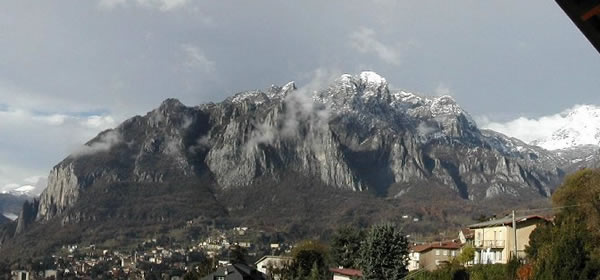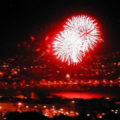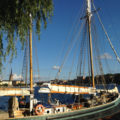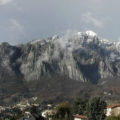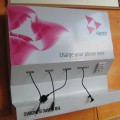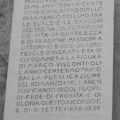Amazon, always the pioneer, is experimenting with Amazon Theater, a series of short films freely available (including for download) on Amazon.com. I noticed these a few weeks ago, but didn’t get around to watching any til today, back for my nth Christmas-shopping visit, when Chris Noth caught my eye. Always happy to look at him, so let’s watch this film, “Tooth Fairy.” Hmm. Multi-racial family. How nice. How PC. Typical American movie house – huge, full of stuff. (Since I’ve been living in Italy, that’s something I notice. I was distracted during “Thelma & Louise,” thinking: “Why do they have so much junk in their house?”) But these people have a LOT of stuff, including a den with a drum kit and foosball table. A rich family, evidently. Pool, balcony full of hanging plants, and a security guard driving around at night.
Okay, cute little movie, nothing special, I didn’t laugh. Then the credits roll. “Director – somebody Scott. Starring – Chris Noth. Cast in order of appearance: Cookware – Calphalon Tri-Ply…” Huh? The other human actors are listed below the cookware, interspersed with t-shirts, kitchen stuff, and tools. Each product name is a link to the appropriate Amazon page where you can buy the item (Chris Noth is also a product).
Product placement is common in movies and TV shows with contemporary settings – part of the reason I like costume drama is that it gives me a break from the barrage of advertising. I suppose Amazon has merely taken the trend to its logical extreme, by giving the products equal billing with the actors. I wonder how the actors feel about that. At what stage in your career can you be assured of being listed above, say, a socket wrench?
As a small rebellion against the inescapability of advertising in modern life, I have started peeling the labels off shampoo bottles etc. as soon as I get them home. Now at least I can take a bath without the packages screaming at me. So if you have occasion to take a bath or shower at our house, you’ll have to read the backs of the bottles to determine which is the shampoo, liquid soap, bath foam, etc.
Dec 7, 2004
John Francini responds:
Part of the reason that places like Amazon, and advertisers in general, think they need to do this product-placement nonsense is very simple: the TV audience is becoming highly fragmented. 30 years ago in the US there were exactly three commercial TV networks, plus PBS. If people watched a program aired nationally, they watched it on one of those three networks. It was effectively a “captive” market for advertisers: they could reach tens of millions without breaking a sweat.
Now, as you know, it’s substantially different: my cable system has some 200+ channels, and the audience is fragmented in many different ways. There are very few programs in the US that pull the kinds of audiences that advertisers used to see regularly – the Superbowl, and maybe the late stages of the baseball playoffs and the World Series (which certainly did this year, with the Red Sox breaking the Curse.)
The audience is also getting much better at tuning out the noise of advertising. So, in this incessant battle, the advertisers are trying new tactics, such as product placement in shows, or producing shows themselves. (BMW, for example, has a highly successful miniseries that’s only available on the Net. It seems to be aimed straight down the middle of their target audience, and hits it dead on.)
And of course, in the typical American supermarket, packaged goods makers do their last bit of screaming at the customers, in the form of ever-more-splashy graphics and loud labels. Why? Because while all these brands are struggling to rise above the visual noise of a crowded marketplace, we’re tuning it all out.
In fact, until you brought it up, I hadn’t even thought about how loud some of the packaging is – I’d tuned it all out long ago. It seems marketers have been visually screaming at us for decades. One local Boston example: Fenway Park, where the Red Sox play, has the fabled Green Monster. Did you know that, as recently as 1947, the wall wasn’t green, but was off-white and covered with a dozen or more ads? And the highways and byways of American roads were far more littered with billboards than they are now? Plus ça change, plus c’est la même chose…

